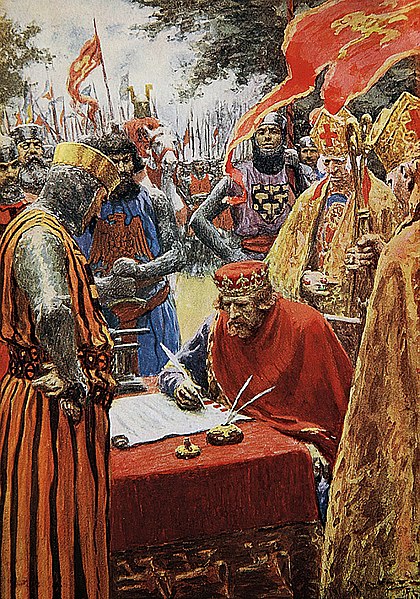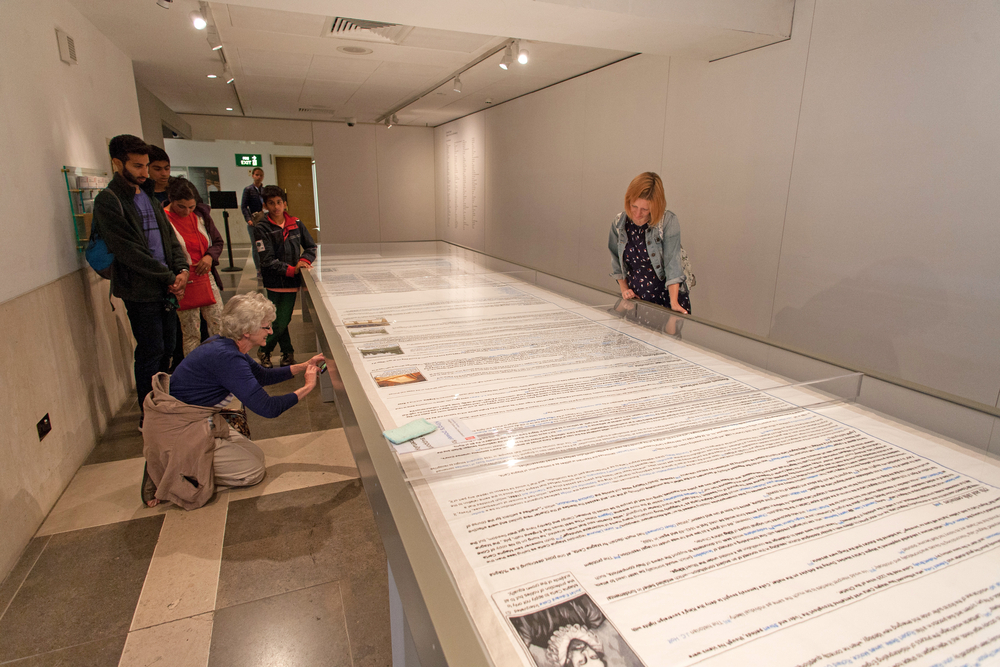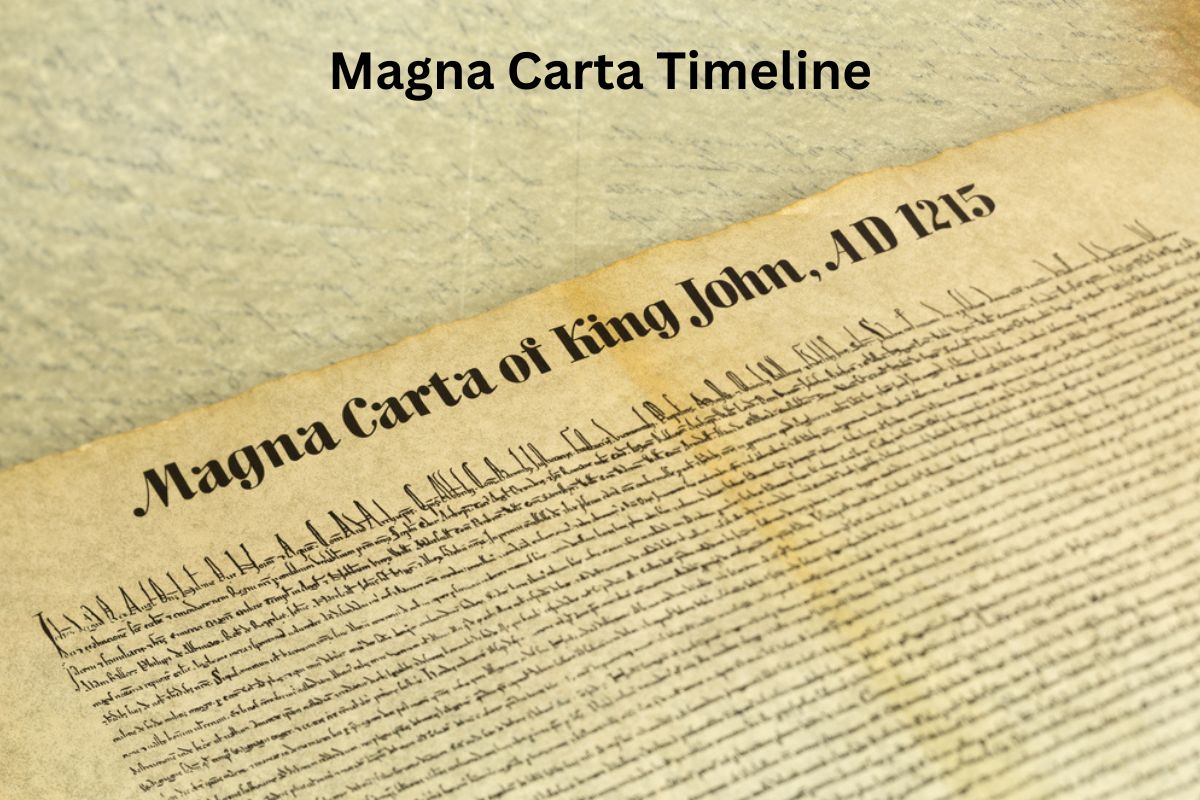The Magna Carta, often referred to as the “Great Charter,” is a historic document that was first issued in 1215 during the reign of King John of England.
It represents a crucial milestone in the development of constitutional and legal principles, as it sought to limit the absolute power of the monarchy and establish fundamental rights and protections for the barons of England.
The Magna Carta’s influence extends far beyond its time, serving as a cornerstone for the development of modern democratic and legal systems, emphasizing the rule of law and individual liberties.
| Year | Event |
|---|---|
| 1199 | King John becomes King of England |
| 1205 | Conflict with Pope Innocent III |
| 1214 | Military Defeats and Financial Struggles |
| 1215 | Barons rebel; Magna Carta sealed |
| July 1215 | Pope Innocent III rejects the Magna Carta |
| 1216 | Civil War; King John’s death |
| 1217 | Regency established; Magna Carta reissued |
| 1225 | Final version of the Magna Carta |
| 1297 | Confirmation of the Magna Carta by Edward I |
| Ongoing | Influence on future legal systems |
Timeline of the Magna Carta
1199 – King John Becomes King of England
In the year 1199, John Lackland, the youngest son of King Henry II, ascended to the English throne as King John. His reign was marked by a tumultuous backdrop.
Also Read: Facts About the Magna Carta
He inherited a kingdom that had been financially drained due to the costly military campaigns of his brother, Richard the Lionheart.

1205 – Conflict with Pope Innocent III
King John’s reign was significantly overshadowed by conflicts with the powerful Roman Catholic Church and its leader, Pope Innocent III.
A major dispute arose over the appointment of the Archbishop of Canterbury, a position of immense significance in the English Church.
Also Read: Black Death Facts
Pope Innocent III supported Stephen Langton for the role, while King John had his own candidate in mind. This disagreement led to the imposition of an interdict on England, a severe penalty that essentially halted religious services and sacraments throughout the country.
In response to the interdict, King John levied heavy taxes on the clergy, further souring his relationship with both the Church and his barons.
1214 – Military Defeats and Financial Struggles
During King John’s reign, England faced numerous military setbacks, particularly in his efforts to regain lost territories in France. These campaigns were not only expensive but also largely unsuccessful, straining the kingdom’s finances.
The Battle of Bouvines in 1214, where John’s forces suffered a resounding defeat against the French, was a significant blow to his prestige and authority. To fund his military endeavors, King John imposed burdensome taxes on the barons, leading to widespread dissatisfaction and resentment among the nobility.
The confluence of King John’s autocratic rule, heavy taxation, disputes with the Church, and military failures created an atmosphere of rebellion and discontent among England’s barons, setting the stage for the events that would culminate in the sealing of the Magna Carta in 1215.
1215 – Barons Rebel, and Magna Carta is Sealed
The year 1215 witnessed a pivotal moment in English history. Frustrated and angered by King John’s oppressive rule, heavy taxation, and disregard for their traditional rights and privileges, a coalition of powerful barons and nobles rebelled against the king.
Led by figures like Stephen Langton, the Archbishop of Canterbury, and other influential nobles, they confronted King John, demanding significant reforms.
In June 1215, a historic meeting took place at Runnymede, a meadow near Windsor Castle. It was at this gathering that King John was pressured into sealing the Magna Carta, a Latin document that outlined a series of demands and restrictions on the king’s powers.
While the Magna Carta did not create a constitutional democracy in the modern sense, it did establish fundamental principles that limited the monarch’s authority and aimed to protect the rights and privileges of the barons.

July 1215 – Pope Innocent III Rejects the Magna Carta
The Magna Carta’s significance extended beyond England’s borders, prompting concern from Pope Innocent III. The pope, at King John’s request, issued a papal bull in July 1215, declaring the Magna Carta null and void.
Pope Innocent III cited coercion and duress as reasons for the nullification, primarily because King John had been forced into sealing the document under pressure from the rebellious barons.
This papal rejection, while alarming at the time, ultimately did not prevent the Magna Carta from becoming a lasting symbol of legal and constitutional principles in England.
1216 – Civil War and King John’s Death
Following the sealing of the Magna Carta, the situation in England deteriorated into a state of civil war. King John and his loyalists clashed with the rebel barons, each seeking to secure their interests and control over the kingdom. The conflict raged on for months.
Tragically, King John’s life came to an end in October 1216. His death marked a turning point in the conflict and the broader history of the Magna Carta. His nine-year-old son, Henry III, succeeded him to the throne.
With a child on the throne, the barons continued their efforts to uphold the principles laid out in the Magna Carta and secure their rights in the face of royal authority.
1217 – Regency Established, and Magna Carta is Reissued
In the wake of King John’s death in 1216, his nine-year-old son, Henry III, ascended to the throne of England. Due to the young king’s age, a regency government was established to rule on his behalf. This regency marked a period of relative stability compared to the tumultuous years of King John’s rule.
During this time, in 1217, the Magna Carta was reissued. This reissuance aimed to provide reassurance to the barons and nobles that the principles and rights outlined in the Magna Carta would be upheld during the reign of the young King Henry III.
1225 – Final Version of the Magna Carta
In 1225, during Henry III’s reign, a more definitive and authoritative version of the Magna Carta was issued. This version sought to clarify and consolidate the terms and principles of the Magna Carta. It also addressed some of the ambiguities and disputes that had arisen over the previous decades.
Importantly, this reissue solidified the Magna Carta as a legal document and a symbol of the relationship between the king and his barons. It was no longer just a response to a particular set of grievances but a foundational document that established the concept of the rule of law and the limits of royal authority in England.
1297 – Confirmation of the Magna Carta by Edward I
The Magna Carta continued to evolve in its significance over the years. In 1297, during the reign of King Edward I, the Magna Carta was confirmed and reissued once again.
This reconfirmation, known as the “Confirmation of the Charters” or “Confirmatio Cartarum,” reaffirmed the Magna Carta’s status as part of English law.
It emphasized that not only the barons but all free men had certain rights and protections guaranteed under the Magna Carta. It also established the principle that the king was subject to the law and could not act arbitrarily or without the consent of his subjects.
Ongoing Influence on Future Legal Systems
The Magna Carta’s legacy extended far beyond its historical context. It became a symbol of the rule of law, individual liberties, and the idea that no one, not even a monarch, was above the law.
It laid the groundwork for the development of modern constitutional and legal systems, not only in England but also in many other parts of the world.
Concepts such as due process, habeas corpus, and the idea of a social contract between rulers and subjects can trace their roots back to the Magna Carta. It continues to be celebrated as a foundational document in the history of democracy and human rights, influencing the development of legal and political systems for centuries to come.
